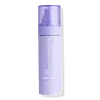What's inside
What's inside
 Key Ingredients
Key Ingredients

 Benefits
Benefits

 Concerns
Concerns

 Ingredients Side-by-side
Ingredients Side-by-side

Diethylamino Hydroxybenzoyl Hexyl Benzoate
UV FilterEthylhexyl Methoxycinnamate
UV AbsorberBis-Ethylhexyloxyphenol Methoxyphenyl Triazine
Skin ConditioningEthylhexyl Triazone
UV AbsorberAlcohol Denat.
AntimicrobialIsododecane
EmollientPolyester-8
Skin ConditioningDicaprylyl Carbonate
EmollientTocopheryl Acetate
AntioxidantAscorbyl Tetraisopalmitate
AntioxidantBisabolol
MaskingNiacinamide
SmoothingAloe Barbadensis Leaf Extract
EmollientCamellia Sinensis Leaf Extract
AntimicrobialCocos Nucifera Oil
MaskingParfum
MaskingHelianthus Annuus Seed Oil
EmollientParaffinum Liquidum
EmollientButylene Glycol
HumectantEthylhexyl Palmitate
EmollientSilica Dimethyl Silylate
EmollientSodium Hyaluronate
HumectantPhenoxyethanol
PreservativeBenzyl Salicylate
PerfumingHexylene Glycol
EmulsifyingCaprylyl Glycol
EmollientTocopherol
AntioxidantDiethylamino Hydroxybenzoyl Hexyl Benzoate, Ethylhexyl Methoxycinnamate, Bis-Ethylhexyloxyphenol Methoxyphenyl Triazine, Ethylhexyl Triazone, Alcohol Denat., Isododecane, Polyester-8, Dicaprylyl Carbonate, Tocopheryl Acetate, Ascorbyl Tetraisopalmitate, Bisabolol, Niacinamide, Aloe Barbadensis Leaf Extract, Camellia Sinensis Leaf Extract, Cocos Nucifera Oil, Parfum, Helianthus Annuus Seed Oil, Paraffinum Liquidum, Butylene Glycol, Ethylhexyl Palmitate, Silica Dimethyl Silylate, Sodium Hyaluronate, Phenoxyethanol, Benzyl Salicylate, Hexylene Glycol, Caprylyl Glycol, Tocopherol
 Reviews
Reviews

Ingredients Explained
These ingredients are found in both products.
Ingredients higher up in an ingredient list are typically present in a larger amount.
Parfum is a catch-all term for an ingredient or more that is used to give a scent to products.
Also called "fragrance", this ingredient can be a blend of hundreds of chemicals or plant oils. This means every product with "fragrance" or "parfum" in the ingredients list is a different mixture.
For instance, Habanolide is a proprietary trade name for a specific aroma chemical. When used as a fragrance ingredient in cosmetics, most aroma chemicals fall under the broad labeling category of “FRAGRANCE” or “PARFUM” according to EU and US regulations.
The term 'parfum' or 'fragrance' is not regulated in many countries. In many cases, it is up to the brand to define this term.
For instance, many brands choose to label themselves as "fragrance-free" because they are not using synthetic fragrances. However, their products may still contain ingredients such as essential oils that are considered a fragrance by INCI standards.
One example is Calendula flower extract. Calendula is an essential oil that still imparts a scent or 'fragrance'.
Depending on the blend, the ingredients in the mixture can cause allergies and sensitivities on the skin. Some ingredients that are known EU allergens include linalool and citronellol.
Parfum can also be used to mask or cover an unpleasant scent.
The bottom line is: not all fragrances/parfum/ingredients are created equally. If you are worried about fragrances, we recommend taking a closer look at an ingredient. And of course, we always recommend speaking with a professional.
Learn more about ParfumSodium Hyaluronate is hyaluronic acid's salt form. It is commonly derived from the sodium salt of hyaluronic acid.
Like hyaluronic acid, it is great at holding water and acts as a humectant. This makes it a great skin hydrating ingredient.
Sodium Hyaluronate is naturally occurring in our bodies and is mostly found in eye fluid and joints.
These are some other common types of Hyaluronic Acid:
Learn more about Sodium HyaluronateTocopheryl Acetate is AKA Vitamin E. It is an antioxidant and protects your skin from free radicals. Free radicals damage the skin by breaking down collagen.
One study found using Tocopheryl Acetate with Vitamin C decreased the number of sunburned cells.
Tocopheryl Acetate is commonly found in both skincare and dietary supplements.
Learn more about Tocopheryl Acetate